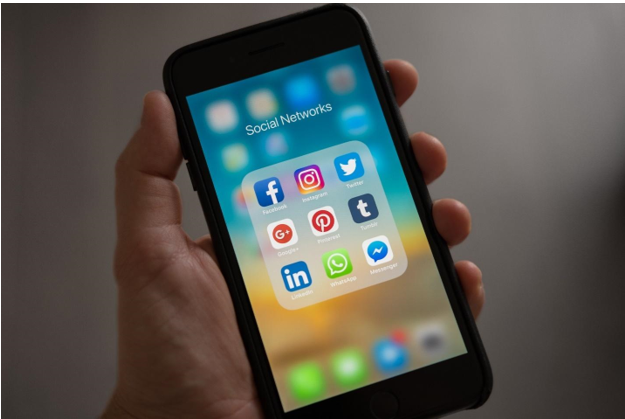Guide
Understanding Gen Z: A Guide to Web Design

Generation Z will soon become the leading population group worldwide. These young people were born after 1996. They are racially and ethnically diverse, well-educated, and tech-savvy. Although Understanding Gen Z-ers, also called zoomers, share some characteristics with Millennials, their formative years have been affected by unique social and cultural processes. As a result, they have distinct values, attitudes, and worldviews that marketers cannot ignore.
Companies willing to draw this generation’s attention should be aware of these unique features. Specifically, it’s essential to adjust the UI and UX design to make websites relevant and engaging for young people. This article helps uncover the key characteristics of Generation Z-ers that are relevant for website design. It also explains how it can be adjusted to meet their needs and interests.
Understanding Generation Z: Key Features
Assuming that Generation Z is the same as Millennials is a big mistake. The world in which they have been raised has been changing at an unprecedented pace. It presented new challenges and problems that no generation before had ever known. Let’s discuss in detail why Generation Z-ers are unique and what makes them the way they are.
Diversity is the key characteristic.
One of the first things that come up when Generation Z is discussed is their racial diversity. Demographic studies show that this generation may be the last predominately white generation in the United States. However, it’s also important to understand that diversity is not limited to race and ethnic background. Young people embrace diversity in all its complexity. They show tolerance and acceptance of people’s differences in worldviews, lifestyles, habits, religion, sexual orientation, self-identity, etc. Understanding Gen Z trends and the increasing exposure to different social and cultural phenomena have shaped these attitudes to diversity.

Individuality and self-expression.
Generation Z is also known for its willingness to experiment and shape individual identities. Generation Z-ers challenge the conventional perceptions of gender, style, and social norms and oppose any stereotypes. They like to choose their own paths and define themselves in a way that makes them feel comfortable and confident, even if older generations don’t approve of these experiments. The value of self-identity may be one of the reasons why Generation Z supports human rights, LGBT rights, etc.
Communication and dialogue are crucial.
Generation Z-ers’ diversity and open-mindedness also explain why these young people are so good at bridging the gaps and building connections. This generation believes that positive changes happen through dialogue. They are very pragmatic when it comes to addressing social issues and dilemmas. Moreover, Understanding Gen Z is also good at communication and connection. They can interact equally well with the close ones and people they have only met online. They see no boundaries for communication, which is not surprising given the opportunities provided by advanced technologies and social media.
A drive for authenticity and meaning.
Generation Z-ers value authenticity in products and services. They search for products and services that are 100% real and meet the highest standards. More importantly, these young people prefer companies whose values coincide with their own. For example, they appreciate brands that invest in eco-friendly initiatives, support local communities, avoid animal-tested products, etc. Authenticity also manifests itself in a desire to engage with smaller brands with appealing missions and reputations. In other words, Generation Z-ers don’t want to simply consume – they want to make it meaningful and ethically acceptable.

They are realistic and pragmatic.
With a large body of information at their disposal, young people have become more critical and pragmatic about things. They consume information online but never forget to apply analytical and critical thinking to discover the truth. Generation Z-ers are also pragmatic and strive for stability more than the previous generation. They are financially minded and conscious when it comes to spending, and they tend to avoid taking financial risks. The latter characteristic may be explained by the fact that Generation Z was raised in a period of a severe economic crisis.
All the listed features make Generation Z unique from the sociological perspective. At the same time, they shape this generation as consumers of online content by determining their digital habits and interests.
Generation Z and Technology: A Growing Dependence

One feature deserving special attention is Understanding Gen Z’ relationship with technology. Unlike Millennials that witnessed the gradual adoption of technology and learned to interact with it along the way, Generation Z-ers were born when technology had already taken over the world. Therefore, this generation is often called the first digital natives. It means that these young people have been interacting with technology since the first years of their lives. Statistics show that 98% of people in their 20s own a smartphone. Many smartphone owners spend more than four hours a day using their smartphones.
The hyperconnectivity phenomenon greatly affected Generation Z. This term refers to a constant attachment to technology that creates a sense of being connected to others through online interaction. Generation Z-ers are attached to their smartphones and laptops. They are always online and spend many hours a day hunched over their screens. These youngsters study, work, communicate, and entertain themselves online, allowing the digital world to replace many aspects of real-world experiences.
For the past year, the COVID-19 pandemic made Generation Z even more dependent on technology. The lockdown forced young people to stay at home all the time. It made them even more dependent on social media, messengers, and online shopping. Phenomena such as constant connectivity, social media, and on-demand entertainment allowed Generation Z to overcome the social distancing period. At the same time, they made them more isolated from the real world.

It’s also essential to mention the harmful effects of pervasive technology use of Generation Z. Young people’s reliance on technology affected their communication patterns and relationships with other people. There are concerns that young technology users are becoming less capable of building real-world social connections. They hide behind their online identities and strive for instant gratification. When they fail to receive it, they grow disappointed and risk developing mental health issues such as anxiety and depression.
Generation Z-ers also use technology for personal fulfillment. This particularly relates to blogging and social media. These young people consider themselves members of digital communities where they have distinct online image and reputation. Many Generation Z-ers want to become “influencers” on social media to either support some important cause or simply earn money and fame.
Understanding the role of social media in zoomers’ lives is crucial for uncovering how they interact with the world and consume products and services. Social media such as YouTube, Instagram, TikTok, and others are the primary sources of information for Understanding Gen Z. They enjoy watching short videos and generally consume easy-to-read information. Social media is the way for them to kill time and entertain themselves. They open social media apps dozens (if not hundreds) of times a day, as it’s crucial for them to feel connected. Many young people feel anxious and stressed when they don’t have a chance to check their social media regularly (e.g., at work). Generation Z’s unique features are important for web designers who develop content that should engage zoomers meaningfully.
Generation Z as Consumers
While we’ve already covered some consumption-related features of Generation Z, let’s dwell some more on this topic. This generation’s consuming patterns matter for website developers and designers because they define how zoomers behave online. There are two key ideas to remember when it comes to zoomers’ consumption:
- Consumption as an expression of individual identity. Generation Z-ers do not simply purchase things. They carefully evaluate how the products and services can highlight their unique identities.
- Consumption as a matter of ethical concern. Moreover, zoomers check whether the companies they support embrace the right values and practices. For example, they need to support sustainability, social justice, green initiatives, etc.
Furthermore, consumption and social media are inseparable for Generation Z. Young people use social media as a source of shopping inspiration, customer feedback, interaction with companies, and shopping itself. The very concept of social commerce is strongly supported by zoomers who enjoy purchasing things on social media. Instagram has been taking advantage of this consumption pattern by allowing companies to sell things directly in the app.

Generation Z also enjoys gamification elements on social media. Understanding Gen Z like gaming personalities and elements of gaming in their social media apps. Gamification, in this context, means everything that exploits elements of an interactive game to engage the audience. For example, even Q&A sessions on Instagram can be a form of gamification.
Zoomers are actively involved in the consumption culture. They buy and comment on products. They like sharing reviews and providing feedback on social media and the company’s websites. They also tend to rely on other people’s feedback because they approach consumption pragmatically and want to know whether the product is worth it.
Other exciting features of zoomers’ consumption patterns include:
- Access is more meaningful than ownership
- Sharing products is acceptable and even desirable (e.g., car-sharing)
- Personal data security is a must
- Individualization of the shopping experience
Changing Web Design to Engage Generation Z
You are probably wondering why we dwell so much on zoomers’ habits, values, and interests. Well, all their unique features matter for web design. They determine how young people interact with online content. Web designers can use this knowledge to create websites that attract and retain Gen Z’s attention and engage them meaningfully. Now, it’s time to discuss specific strategies for web design that can help companies attract the zoomer audience.
Invest more effort into a mobile website over a desktop version.
As we explained above, Understanding Gen Z cannot live without their smartphones. Thus, it makes sense to spend more time enhancing the visual aspects of the mobile website. This is the platform that will help your company get access to the zoomer population.
Decrease the loading time.
Zoomers live in a fast-paced world and search for instant gratification. Whenever they visit a website, they expect everything to work fast. Otherwise, they leave the page and never return. With the loading time being a deal-breaker for zoomers, designing websites that open fast is essential.
If there is no way to decrease the loading time, try to distract zoomers.
Young people don’t have the patience to wait for the website or app to load. Designers can prevent them from being bored by creating visually appealing loading screens or distracting experiences. Never underestimate the usefulness of this pre-communication. It allows showing care for the customers.
Use video content for better engagement with the audience.
Zoomers enjoy videos in all manifestations. YouTube is their favorite social media platform, but they also enjoy short videos on TikTok and Instagram. It gives web designers a hint as to how they should design the websites to attract a young audience. The more videos you incorporate, the higher chances for the website to be noticed by zoomers.
Simplicity is never going out of style.
Other generations also like simplicity. However, it is a necessity for zoomers. The thing is that they share their focus between many platforms and apps. Thus, they need a simple design to connect meaningfully and stay focused on the content.
Use bright colors.
Simplicity is not the only suitable strategy to attract Understanding Gen Z. Using bright colors and backgrounds may also pay off. Generation Z has a very short attention span, so colors increase this span a bit and give a company a chance to connect with this population.
Don’t forget about shareability.
You already know that Gen Z is a social media generation. From the web design perspective, it means that all content should be easy to share. For example, highlighting short quotes with key information makes it easy for zoomers to share it on Twitter. Create images and short videos you post on the website with shareability in mind. This way, you allow the zoomer audience to interact with your content and contribute to your brand’s visibility.

Improve legibility and readability.
Web design also implies creating easy-to-read content that zoomers can comprehend. Take care of the font size, background, text alignment, spacing, and other typography-related aspects of the content. It will make it easier for zoomers to scan and read it.
Make zoomers feel special.
Remember, we told you about Gen Z experiencing a strong sense of uniqueness and self-identity? Apply this knowledge by offering personalization and customization features. For instance, allow zoomers to change the website settings (e.g., background color). This will give them the freedom to make independent decisions, which they value greatly.
Ads should also be personalized.
Zoomers tend to never return to website that fails to personalize ads according to their preferences. This aspect relates to recommendation algorithms. However, web designers can contribute to personalization by creating ads that catch Understanding Gen Z’ attention. Locating them strategically on the page is also crucial to make sure zoomers pay attention.
Optimize the content for longer keywords.
Gen Z’s engagement with technology is not limited to smartphones and laptops. They also use intelligent voice assistants such as Alexa or Siri to search for information. Questions they ask tend to be longer than those they type in the search bar. It means that your content should be optimized for these search queries.
Meet the highest demands.
Generation Z-ers browse through thousands of websites and have high standards for how they should look. They can be harsh critics, so make sure your web design is sleek and trendy. It is vital to create visually engaging, captivating content that allows your website to stand out.
Ensure inclusivity.
Since Generation Z is a diverse population, your web design should acknowledge its differences in moral and social values. Represent diversity through images and videos. For example, make sure the people appearing on the images are racially and ethnically diverse. Offer language preferences options to reach a wider audience. Otherwise, zoomers won’t feel emotionally connected to your brand.
Summing Up
Generation Z makes up a growing percentage of the target audience of many companies. It means that modifying the website design to meet their interests and values is essential to engage this population. Don’t forget that zoomers value authenticity in everything. Make sure that the design actually reflects the company’s values and goals. In this way, you will be able to attract and retain loyal Gen Z customers. They can become your key audience in the long-term perspective, so it makes sense to cater to their needs.












